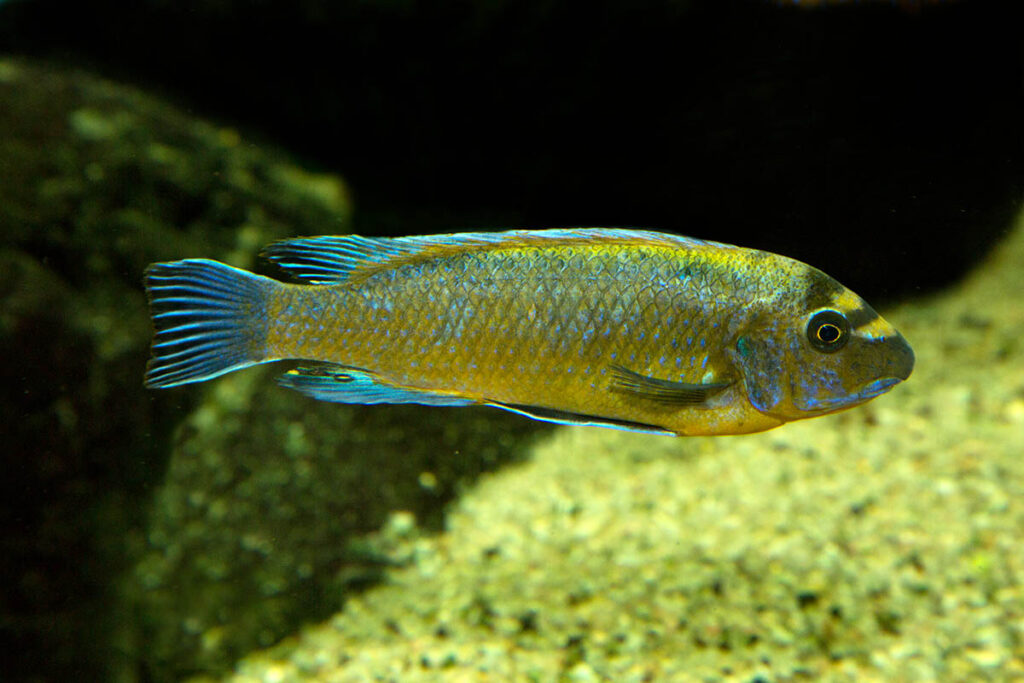
Aquarists who’ve been around for years and have dabbled with African rift-lake cichlids have long known two prominent cichlid species in the genus Labeotropheus, endemic to Lake Malaŵi/Lake Malawi. In the trade, it was simply Labeotropheus fuelleborni, with its stockier body type, and the more slender/elongate Labeotropheus trewavasae.
If you hadn’t been paying attention, you likely wouldn’t have noticed the addition of three more species in the last decade: Labeotropheus artatorostris, Labeotropheus chlorosiglos, and Labeotropheus simoneae during the 2010s. So, prior to May 25th, 2023, the official tally was five species in the genus. You can read about these three species, and their descriptions, in a prior AMAZONAS story.
Now, the genus has more than doubled, with the addition of six new species of Labeotropheus described in the journal Ichthyology & Herpetology by authors Michael J. Pauers and Titus B. Phiri, bringing the total to 11.
Meet the Six New Species:
Understanding the biogeography of these new species may be extremely helpful with identifying aquarium strains of Labeotropheus that are in the hobby while carrying providence/location names. Examining the authors’ notes on the distribution and range of each species should easily connect a new species name to a “locale” in a collection. Combining this information with an examination of coloration and morphology details should further support or confirm the “reassignment” of such aquarium fish to their proper taxon.
- Labeotropheus alticodia – “appears to be restricted to the Maleri Islands, specifically Maleri and Nankoma Islands, in Lake Malaŵi National Park, Malaŵi”
- Labeotropheus aurantinfra – “appears to be restricted to Chirwa Island and the nearby Ndomo Gap, between the tip of the Luromo Peninsula and Chirwa Island”
- Labeotropheus candipygia – “is endemic to the Malaŵian shore of Lake Malaŵi, and appears to be restricted to Chitende Island and the nearby Chitende Gap, between Chitende Point (the remnants of a peninsula that once connected Chitende Island to the mainland) and Chitende Island”
- Labeotropheus chirangali – “is known only from the Mphanga Rocks off the tip of the Luromo Peninsula along the northwestern shore of the lake”
- Labeotropheus obscurus – “is only known from Namalenje Island”
- Labeotropheus rubidorsalis – “We captured specimens at both Maleri and Nankoma Islands, in Lake Malaŵi National Park, and found a similarly colored slender Labeotropheus at Namalenje Island, but only captured two specimens and did not include these in our analyses; Ribbink et al. (1983a) also reported a similarly colored slender Labeotropheus from Namalenje. We did not collect at the nearby Nakantenga Island, where Ribbink et al. (1983a) reported a differently colored slender Labeotropheus.”
It’s worth noting that, privately, not all aquarists and experts are jumping on board with the divisions of the original two Labeotropheus species. Whether these species descriptions will withstand the test of time (and further analysis) remains to be seen.
Aquarists can currently download and read the full paper and see photographs of all six new species in an open-access format available via BioONE. https://bioone.org/journals/ichthyology-and-herpetology/volume-111/issue-2/i2021055/Six-New-Species-of-Labeotropheus-Cichliformes–Cichlidae-from-the/10.1643/i2021055.full






I’m curious about the source of their blue coloration. Is it from pigmentation, or is it a result of structural coloration? Since the only two vertebrates on Earth that the produce true blue pigment are a type of fish, perhaps it’s possible that these fish have a similar mechanism. Blue coloration in nature is just very uncommon…